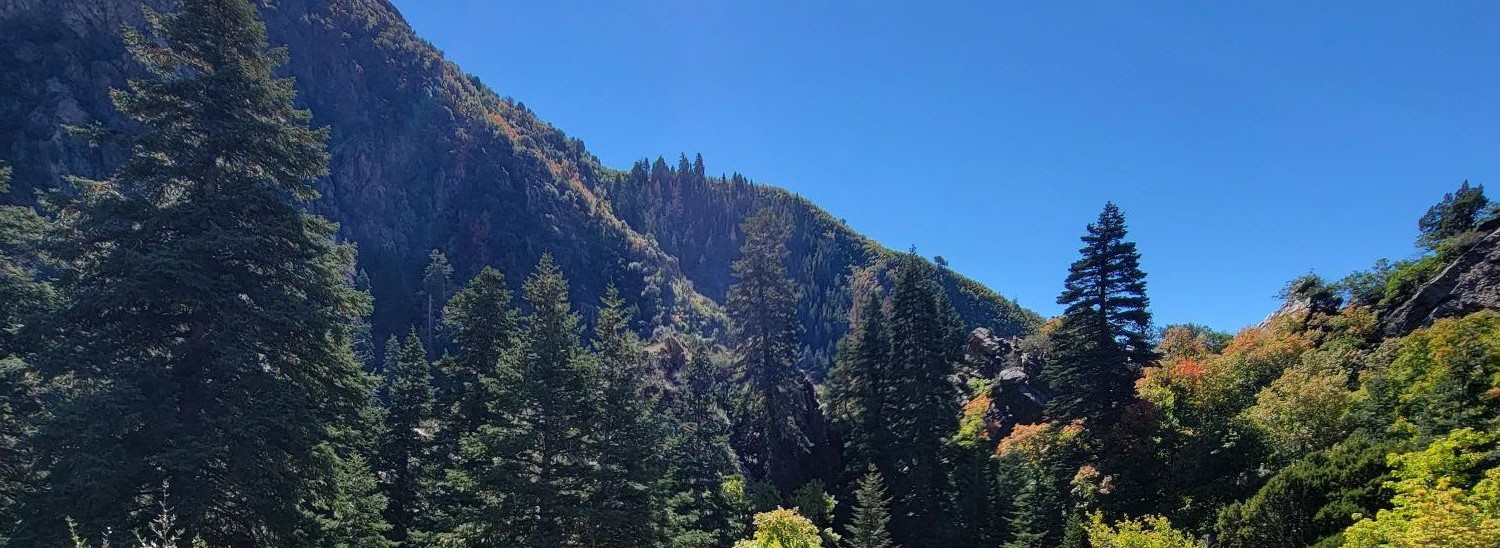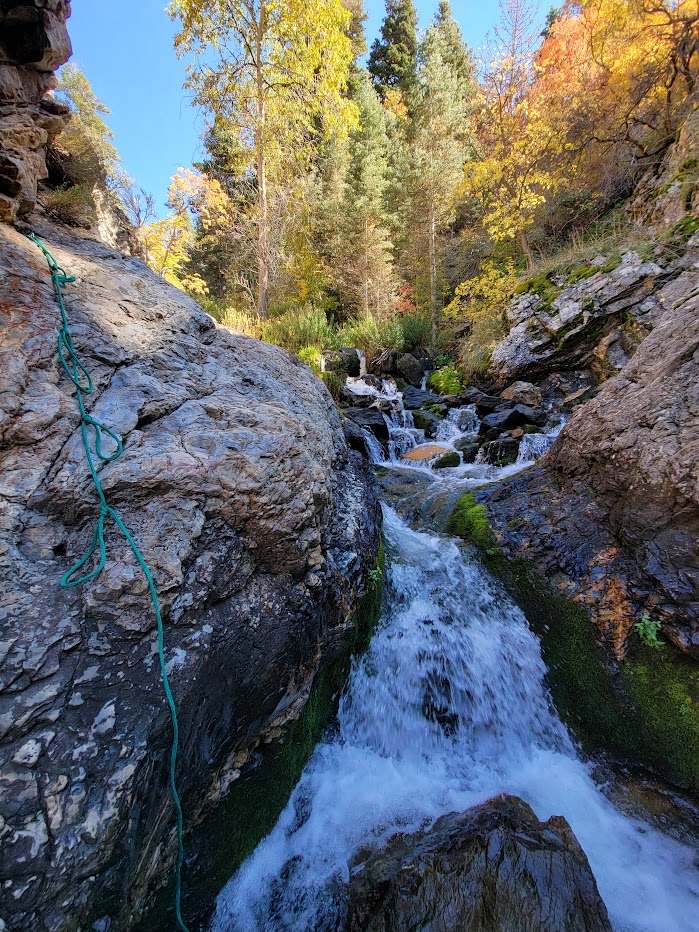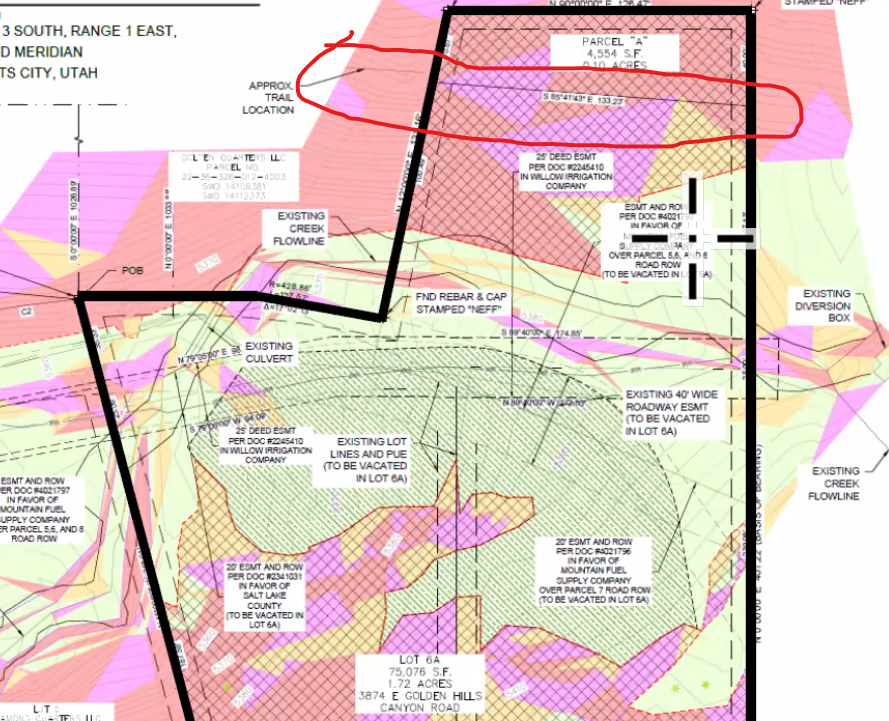Help save access to Deaf Smith Canyon in Cottonwood Heights, UT
Development is planned around the mouth of the canyon and trails that provide access to it. This has the potential to restrict access that has been enjoyed for years.

Blocks an Established Road
There's a clear existing road through these properties that's been used for decades to access the canyon. This strongly suggests it qualifies as a prescriptive road under Utah's statutes.
Ignores the Larger Trail System
Deaf Smith is planned to be part of the larger Bonneville Shoreline Trail. The proposed BST cuts directly through these lots; an alternative route would need to be found.
Reduces Accessibility
Currently, the trail is easily accessible through an old, gentle-grade utility road and also by a paved road. This makes the canyon enjoyable for people with limited hiking abilities, including young children. The proposed easement has a much steeper incline, requiring construction to make it accessible. The construction may be years out due to lack of funding, landowner negotiations and installation.
Hinders Access to Existing Trails
There are two existing trails: one follows the north fork of Deaf Smith Creek and the other is south fork, Willow Creek. The new development will impede access to the Willow Creek drainage. Currently, the northernmost access point drops users too far up the canyon to reach the south fork, requiring a creek crossing. This can be dangerous year-round and potentially impossible without a bridge. At this time, it is unknown what funds are available for construction of a bridge, permits and trail easements.
Contact city officials
Leave a message for the mayor of Cottonwood Heights and each district representative stating the following:
- Your name and contract information
- How long and how you've accessed the canyon
- Pledge to be a part of an affidavit and court appearance that may likely be a part of the prescriptive roadway process
| Mayor | Mike Weichers | 801-944-7087 |
| District 1 | Matt Holton | 801-944-7089 |
| District 2 | Suzanne Hyland | 801-944-7086 |
| District 3 | Shawn Newell | 801-300-3068 |
| District 4 | Ellen Birrell | 801-910-5942 |
Take the survey
We plan on sharing the survey results with city officials. Please take it here!
Amplify the cause
Please share this site and the survey on social media to help us raise awareness and get more community members involved!
History of the canyon
1865
John Thayne/Thayn secured a permit to control the canyon and charge a toll ($0.75) for loads of lumber removed. He returned the permit within six months, because road building and tree extraction were too difficult due to the steep and rugged terrain.
1890s
Three mines were established by the Big Cottonwood Mining District to extract gold & other minerals. Miners established the road (now known as Golden Hills Canyon Road) to access both canyons. The town of Gold City grew up at the mouth of Paulson Canyon, the canyon just to the south of Deaf Smith, in response to the gold rush that ensued.
1900
On October 24, the Big Willow Irrigation Company was formed to bring water from Little Willow Creek to Danish Town.
1922
Utah-Mammoth Mine was worked off and on from 1922-1928; there are 600 to 1000 feet of underground workings. A few ore cars, small bunk house and compressor shed were located there.
1929
First documented hike by Wasatch Mountain Club (WMC) in January 1929. WMC has documented over 100 hikes up Deaf Smith and Little Willow canyons. These canyons are used to access Twin Peaks, Broads Fork, Houndstooth and other unnamed summits by mountaineers, skiers & climbers.
1969
Golden Hills Subdivision created. The short stretch of road known as Golden Hills Canyon Road was then considered a private road by Salt Lake County.
1978
President Carter signed the Endangered American Wilderness Act. This created the protective umbrella to create wilderness designation for Twin Peaks, Mt Olympus, Mt Timpanogos and Mt Nebo; managed by the US Forest Service.
1988
The Forest Service is attempting to obtain an official route through private land. (per John Veranth)
1995
The Forest Service, county planners, and other interested parties are endeavoring to develop a public right-of-way and trailhead into Deaf Smith Canyon. (per David Hanscom and Alexis Kelner)
2024
Save Deaf Smith group formed by concerned locals desiring to preserve trail access to both Deaf Smith and Little Willow Canyons.

